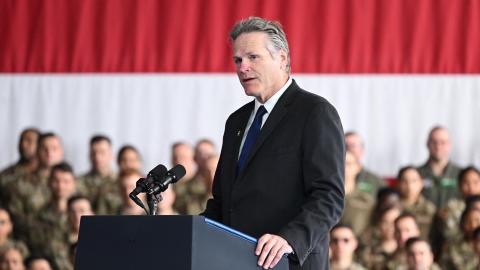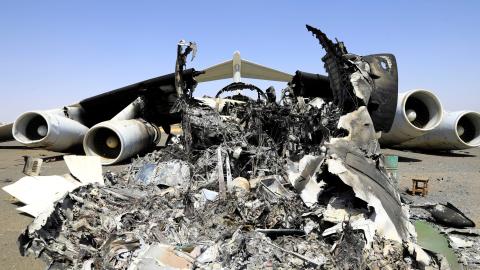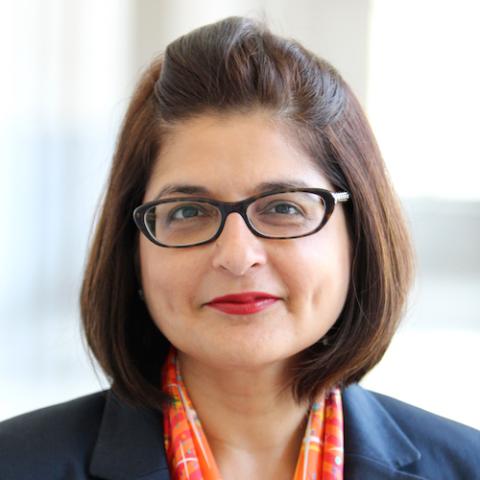Pakistan’s religious minorities are widely viewed as embattled or under attack. This paper undertakes a comprehensive analysis of Pakistan’s policies towards its religious minority populations, both Muslim as well as non-Muslim. It is not only Pakistan where Muslim as well as non-Muslim minorities are under attack. Rather, this is a phenomenon which is prevalent in a number of Muslim-majority countries. In the context of a Muslim world comprising 1.4 billion people, with an extremely young population, not only is it important to recognize how Pakistan treats its minority populations but it is equally critical to note the role of stateless actors or extremist groups in all Muslim countries.
When Pakistan was founded in 1947, its secular founding fathers wanted to create a homeland for South Asia’s Muslims, not an Islamic state. Mohammad Ali Jinnah, recognized as Pakistan’s Quaid-e-Azam (Great Leader), clearly declared that non-Muslims would be equal citizens in the new country. But Pakistan’s trajectory after independence has been very different.
At the time of partition in 1947, almost 23 percent of Pakistan’s population was comprised of non-Muslim citizens. Today, the proportion of non-Muslims has declined to approximately 3 percent. The distinctions among Muslim denominations have also become far more accentuated over the years. Muslim groups such as the Shias who account for approximately 20-25 percent of Pakistan’s Muslim population, Ahmadis who have been declared non-Muslim by the writ of the state, and non-Muslim minorities such as Christians, Hindus and Sikhs have been the targets of suicide bomb attacks on their neighborhoods, had community members converted to Islam against their will, and had their houses of worship attacked and bombed even while they were inhabited by worshipers.
Even the graveyards of Christians and Ahmadis have not been spared. Regular reports of graves being excavated and vandalized appear in the press and via community reports. In Sindh and Balochistan provinces, well-to-do Hindus have been the primary targets of the ransom kidnappings. The numbers of minority Muslims and non-Muslims subjected to these purposeful attacks have increased significantly and the crimes committed have become more heinous. Those accused of “blasphemy” have sometimes been burnt alive outside police stations with no culprits identified or punished.
The origins of Pakistan were different. Reflecting his secular views, Mr. Jinnah nominated a Hindu, several Shias (of whom he was one) and an Ahmadi to Pakistan’s first cabinet. Now, however, non-Muslim representation at the Cabinet level is limited to symbolic appointments while Shias and Ahmadis face smear campaigns from Sunni Muslims that declare them non-Muslims.
Mr. Jinnah’s secular views were demonstrated not only during the struggle for independence but in his famous speech of August 11, 1947, in which he stated that in order to make Pakistan “happy and prosperous,” every person living in the country was a citizen “first, second and last,” irrespective of his or her community, caste, color or creed. His speech advanced the case for a secular, albeit Muslim-majority, Pakistan:
I cannot emphasize it too much. We should begin to work in that spirit and in course of time all these angularities of the majority and minority communities, the Hindu community and the Muslim community, because even as regards Muslims you have Pathans, Punjabis, Shias, Sunnis and so on, and among the Hindus you have Brahmins, Vashnavas, Khatris, also Bengalis, Madrasis and so on, will vanish . . . You are free; you are free to go to your temples, you are free to go to your mosques or to any other place or worship in this State of Pakistan. You may belong to any religion or caste or creed--that has nothing to do with the business of the State . . . We are starting in the days where there is no discrimination, no distinction between one community and another, no discrimination between one caste or creed and another. We are starting with this fundamental principle that we are all citizens and equal citizens of one State . . . Now I think we should keep that in front of us as our ideal and you will find that in course of time Hindus would cease to be Hindus and Muslims would cease to be Muslims, not in the religious sense, because that is the personal faith of each individual, but in the political sense as citizens of the State.1
As originally conceived, Pakistan was at the very least not intended to discriminate among various Muslim denominations, and non-Muslim minorities too were assured of equal rights as citizens. However, things have changed over the last several decades.
Despite the fact that Pakistan’s founding fathers were modern and liberal in their personal views, Islamism still took hold. The use of Islamic slogans and Islam during the 1946 elections preceding independence and in defining Pakistani nationhood immediately after independence resulted in a situation where slowly they conceded space to the Islamists.
The debates in Pakistan’s Constituent Assembly during the 1950s, prior to the finalizing of the country’s first Constitution of 1956, focused a great deal on the demand by the Islamists in the Assembly to pronounce Pakistan an Islamic state. There were ulema (Islamic scholars or clerics) both within and outside the government who championed this demand. Within the government, the clamor for an Islamic state was led by Maulana Shabbir Ahmad Usmani, President of the Jamiat Ulema Islam (JUI) and pir of Manki Sharif from the North West Frontier Province (now Khyber Pakhtunkhwa), and Maulana Akram Khan, President of the East Pakistan Provincial Muslim League.
The blueprint and arguments for the steps required to transform Pakistan into an Islamic State came from Abul Ala Maududi, founder of the Jamaat-e-Islami (JI), the South Asian analogue of the Arab Muslim Brotherhood. According to Maududi, the future constitution of Pakistan had to be based on the underlying assumption that sovereignty rested with Allah and that the state’s function was solely to administer the country. According to him, Sharia was the law of the land and no man-made law could contravene the Sharia.
The extent of Maududi’s influence became visible as early as 1949, when the Objectives Resolution, defining the foundational principle for Pakistan’s Constitution was passed by the Constituent Assembly. The resolution stated,
* Sovereignty belongs to Allah alone but He has delegated it to the State of Pakistan through its people for being exercised within the limits prescribed by Him as a sacred trust.
* The State shall exercise its powers and authority through the chosen representatives of the people.
* The principles of democracy, freedom, equality, tolerance and social justice, as enunciated by Islam, shall be fully observed.
* Muslims shall be enabled to order their lives in the individual and collective spheres in accordance with the teachings of Islam as set out in the Quran and Sunnah.
* Adequate provision shall be made for the minorities to freely profess and practice their religions and develop their cultures.
* Pakistan shall be a federation.
* Fundamental rights shall be guaranteed.
* The judiciary shall be independent.
Non-Muslim politicians objected to the notion of making state policy subservient to “the teachings and requirements of Islam,” which they rightly pointed out were subject to debate and variation. Bhupendra Kumar Dutta, a Hindu politician from East Bengal, warned that the resolution would lead to discrimination against non-Muslims and to internecine battles among Muslims. Politics, Dutta argued,
comes within the sphere of reason while religion within that of faith. If religion and politics are intermingled then there is a risk of subjecting religion to criticism, which will rightly be presented as sacrilegious and it would also cripple reason and curb criticism as far as the state policies are concerned.2
In response to objections, Liaquat Ali Khan, the mover of the resolution and Prime Minister, stated that “Pakistan was founded because Muslims of this subcontinent wanted to build up their lives in accordance with the teachings and traditions of Islam.”3 The Prime Minister, a secular individual, described the passing of the resolution, “as the most important occasion in the life of this country, next in importance only to the achievement of independence.”
Once Pakistan’s raison d’être had been defined in religious terms, the Islamist demands could not be held at bay. Maududi and his fellow Islamists said that citizenship in an Islamic state was open to any Muslim, born anywhere in the world, even if he was not born in the country. However, non-Muslims had to enter into a covenant with the Islamic state.
From Maududi’s point of view, Non-Muslim culture had a negative impact on Muslim life. “It destroys its inner vitality, blurs its vision, befogs its critical faculties, breeds inferiority complexes, and gradually but assuredly saps all the springs of culture and sounds its death-knell,” he wrote. According to him, “the Holy Prophet has positively and forcefully forbidden the Muslims to assume the culture and mode of life of the non-Muslims.”4
Over the years, the Islamist rejection of “non-Muslim” culture took the form of attempts to define a limited “Muslim” culture and limiting the freedom of non-Muslims and Muslims alike to embrace diversity. While non-Muslims were easily defined as “the other,” a struggle also started to determine who among Muslims were pure Muslims and who had allowed Persian or Indian culture and practices to taint their faith.
Similarly, Pakistan’s constitution has been amended to designate Ahmadis as non-Muslims. A similar drive, influenced by Salafi ideology from Saudi Arabia, has been undertaken by Deobandi groups against the Shias. A terrorist offshoot of the Deobandi movement (Takfiris--those who declare some Muslims as kafirs or unbelievers) has been escalating atrocities against Shias in an effort to drive them out of the country or to force them to accept a lowered status in an Islamized Pakistan. Their targets have included men, women and children. Today, Shias form around twenty percent and Ahmadis around 0.22 percent of Pakistan’s population.
Pakistan’s non-Muslim minorities, particularly Sikhs and Hindus, were “cleansed” during the partition riots at the time of independence. Attacks against Muslim minorities started as early as the 1950s when anti-Ahmadi demonstrations and riots took place. They culminated in the 1974 amendment of Pakistan’s Constitution according to which Ahmadis were no longer to be treated as Muslims. The rise of contemporary sectarianism, however, dates back to the 1980s.
Top-Down Islamization
According to Muhammad Qasim Zaman, sectarianism in Pakistan started out as an “urban phenomenon.”5 However, over the years it has transformed into much more than that. A combination of socio-economic factors, state-led Islamization and international events (like the Islamic Revolution in Iran) have played their role in the rise of Shia-Sunni tensions.
General Zia ul Haq, Pakistan’s third military ruler who ruled from 1977-88, imposed a policy of state-led Islamization. Till the time of Zia, most Islamists believed, like Maududi, that given the opportunity any good Muslim would vote an Islamist party into power and set up an Islamic state. By the 1970s it was evident that given the choice Pakistanis, like others, voted for political parties which promised them roti, kapra, makan (food, clothing, housing). This led to what Vali Nasr refers to as the phenomenon of “top-down Islamization” in countries like Malaysia and Pakistan.
As part of this Islamization process General Zia brought in rules and regulations which were supposed to bring Pakistani law more into tune with the Sharia, or at least the Sharia as interpreted by him and his cohorts. These laws, which included the infamous blasphemy law, had a long-term impact on Pakistan’s minorities.
In an attempt to organize the country around one version of Islam, General Zia’s policies targeted the Shias. In 1979 General Zia attempted to impose a policy under which zakat (charity) would be collected directly by the state from each Muslim citizen. Under protests from Shia groups, Zia changed the policy so that only Sunnis would pay it. This led to the rise of Sunni radical organizations and their militant offshoots and, in response, Shia militant outfits.
Pakistan’s Shias belong to different ethnic and linguistic groups and different tribes. They are spread all over the country. A number of leading Pakistani political figures, professionals, academics and media personalities are from the Shia community. Yet this community not only has faced discrimination but has been targeted and attacked by radical Islamist groups of all hues. The one thing that unifies them in the eyes of the anti-Shia Sunni-led militant groups is their religious belief.
The anti-Shia militants roam with impunity, appear on prime-time talk shows on television and hold political rallies where they declare Shias as unbelievers and Wajib-ul-Qatal (deserving of death). These anti-Shia groups have ties to political parties that afford them both political influence and protection. They are rarely arrested, even after they proudly and publicly announce their deeds--like in the repeated massacres in 2013 of Hazara Shias in Quetta. When they are arrested, these terrorists have access to mobile phones in prison, receive visitors openly and are often released swiftly on their own recognizance. The few who have been tried have always been acquitted by Pakistan’s judiciary on the grounds of “lack of evidence.”
The anti-Soviet Afghan jihad of the 1980s not only helped the groups in Afghanistan, it had a massive blowback on Pakistan. Money from Saudi Arabia and other Gulf countries poured in for madrassas all over Pakistan, bringing curricular changes, a Wahhabi (or as it is referred to in South Asia, Ahl-e-Hadith) version of Islam and its views of both Muslim as well as non-Muslim minorities.
The curricular changes were not only in the religious schools but also the secular ones. An entire generation of Pakistanis studying in public (and secular) schools has grown up viewing not only non-Muslim minorities but also Muslim minorities as “the other,” as “unpatriotic,” and as “not Muslim enough.”
These Islamist groups have also been used by the coercive apparatus of the state for their own foreign and security policy agendas. In 1971, the East Pakistan wing of the Jamaat-e-Islami aligned with the Pakistani military to crack down on its fellow citizens, both Muslim and non-Muslim. Bengali Muslims were often portrayed as “too Hindu” to be true Muslims. The Islamist groups in both India and Afghanistan, supported by the military-intelligence complex, believed in the same ideological goals as their sectarian brethren.
There has been a steady decline in religious tolerance in Pakistan over the last 65 years. At the time of Pakistan’s birth and the partition of India in 1947, non-Muslim minorities comprised twenty-five percent of the new country’s population, whereas today they only comprise five percent. According to the last census in Pakistan which collected such data, conducted in 1998, Christians constitute 1.59 percent and Hindus 1.60 percent of Pakistan’s population. While much of the “cleansing of the population” took place in major events (partition, around the 1965 and 1971 wars), there has also been a steady rise in incidents involving attacks on both Christians and Hindus in the last decade.
The small and ever-decreasing Hindu minority has faced a steady barrage of forced conversions and kidnappings, often for ransom. In the last few years there has been an increase in the number of Hindu families migrating or seeking asylum in neighboring India.
One incident of forced conversion of a young Hindu woman that garnered a lot of media coverage was that of Rinkel Kumari. She was abducted with the help of a ruling-party lawmaker and forced to marry and convert to Islam. This is just one case of abduction and forced religious conversion in Pakistan, with around 20-25 kidnappings and forced conversions of Hindu girls in Sindh every month according to a report by the Asian Human Rights Watch.
Discriminatory laws implemented during the 1980s and violence against religious minorities continues to remain of serious concern.Pakistan’s infamous “Blasphemy Law” has targeted religious minorities on a regular basis. Asia Bibi, a poor Christian woman from Punjab, was the first woman in Pakistan’s history to be charged with blasphemy and sentenced to death. In early 2012 a young Pakistani Christian girl, Rimsha Masih, was accused of blasphemy though fortunately the case was dismissed in November 2012. In spite of the case’s dismissal by the court, Rimsha Masih and her family had to be kept in a safe house in Pakistan to prevent vigilante actions against her. Rimsha and her family now live in Canada.
In August 2010, in the town of Gojra in Punjab, seven Christians were burnt alive, 18 others injured and at least 50 houses set on fire by a mob that accused the victims of blasphemy. As a member of parliament, I recall vividly the calls for help from Gojra’s Christians and the effort that had to be made to get the Punjab provincial government and the army to go in and defend the population from bloodthirsty zealots.
Among Muslim-majority countries, Pakistan has the strictest anti-blasphemy laws. Although the law against blasphemy goes back to the days of the British Raj in the subcontinent, the new strictures were introduced during the military regime of General Zia ul Haq. The key section of Pakistan’s Penal code relating to Blasphemy is Section 295. “Damaging or defiling a place of worship or a sacred object,” and “defaming the Holy Prophet of Islam” are among the crimes under these laws with penalties ranging from a fine to death. What is of concern is the fact that according to these laws, “intent of a person to commit blasphemy” is all that is required for conviction. The law is generally not applied to Muslims defiling non-Muslim places of worship.
During the British era, blasphemy laws were used infrequently and were reserved for prosecution of clerics, authors and preachers who caused inter-communal violence by attacking other faiths. But since 1982, any individual can be charged with blasphemy, leading to vigilantism and frivolous accusations against Pakistan’s minorities, especially Christians. Before 1986, only 14 cases of blasphemy had ever been reported under this law, whereas between 1986 and 2010 1,274 people had been charged.6
Islamic parties have strongly and often violently resisted acts that they deem blasphemous, but what is worrying is that today even mainstream and relatively socially liberal parties are maintaining a strong “anti-blasphemy” stance. Prominent political figures like Salmaan Taseer, the former governor of Punjab province, and my colleague in parliament Shahbaz Bhatti, former Federal Minister for Minorities, were assassinated in 2011 for their opposition to the blasphemy laws. Although neither said anything even remotely blasphemous, extremist clerics took the position that opposing laws against blasphemy construed promotion of blasphemy, rendering the two politicians liable to punishment by death.
The first stated purpose of the blasphemy laws is to protect Islamic authority. By Article 2 of the Constitution, Islam is the official state religion. Article 31 states that it is the Pakistani government’s duty to foster an Islamic way of life. Article 33 states that is the country’s duty to discourage parochial, racial, tribal, sectarian, and provincial prejudices among the citizens. Unfortunately, Article 33 of the Constitution has never been utilized to protect the Muslim and non-Muslim minorities in Pakistan in a serious, disciplined method.
Along with the non-Muslim minorities, Ahmadis, who deem themselves a sect within Islam but Orthodox Muslims consider heretics, are targeted for prosecutions under various provisions of the blasphemy laws. Radical Sunni Islamist groups frequently target Ahmadis for attacks, both at their mosques as well as in public places. The Tehreek-e-Taliban Pakistan periodically issues statements “congratulating” Pakistanis for these attacks, referring to the Ahmadiyya and Shia communities as “the enemies of Islam and the common people.” After each act of violence against religious minorities, the Taliban, Lashkar-e-Jhangvi or Sipah-e-Sahaba proudly take responsibility without fear of punishment.
In early March 2013, in Lahore, the capital of Pakistan’s largest province, Punjab, a mob attacked and burned down more than 40 houses belonging to Christians while the police stood by. The attacks on Christians followed a rising tide of attacks on Pakistan’s Shia Muslims and were often mischaracterized in the media as the products of sectarian conflict. In reality, these increasingly ferocious attacks reflect the ambitious project of Islamists to purify Pakistan, making it a bastion of a narrow version of Takfiri Islam. Pakistan literally translates as “the land of the pure.” However, what started in an imperceptible way as early as the 1940s and picked up momentum in the 1990s is a drive to transform Pakistan into a land of religious purification.
Will Pakistan Survive?
The rising radicalization of Pakistani society reflects willful disregard for the rights of its minority populations and also unwillingness among many politicians and bureaucrats to confront the Islamist extremists. The policy of Pakistan’s security services to use religious extremists in regional battlegrounds such as Kashmir and Afghanistan also contributes to their impunity.
In the May 2013 elections in Pakistan, Zia’s Islamization legacy came back to haunt Pakistan. While the nomination papers of moderate and liberal civilian politicians were often rejected on the grounds that they did not pass the litmus test of religiosity and commitment to Pakistan’s ideology, militant and terrorist leaders faced no such problem. It was a clear signal that the State wanted to acknowledge violent extremists as part of the national political mainstream.
A process of society-wide Islamization, begun under Zia ul-Haq, has now reached its full bloom with the wide presence of radical Islamist groups who eliminate any opposition and a greater society that is too stunned to react. Over the last few years there has also been a steady elimination of anyone who opposes this Islamist narrative, including Benazir Bhutto, Salmaan Taseer, Shahbaz Bhatti and others.
The purification of Pakistan started soon after partition from India and was then institutionalized and legalized by military dictator Muhammad Zia ul-Haq. The Islamists are prevailing in the battle of ideas. Secular voices have been either physically eliminated or removed from the mainstream by judicial means. Therefore, it is in the interest of Pakistan’s neighbors and the international community to support the minority communities in Pakistan and to support the voices of those Pakistanis who refuse to give up the idea of a pluralist society.
















